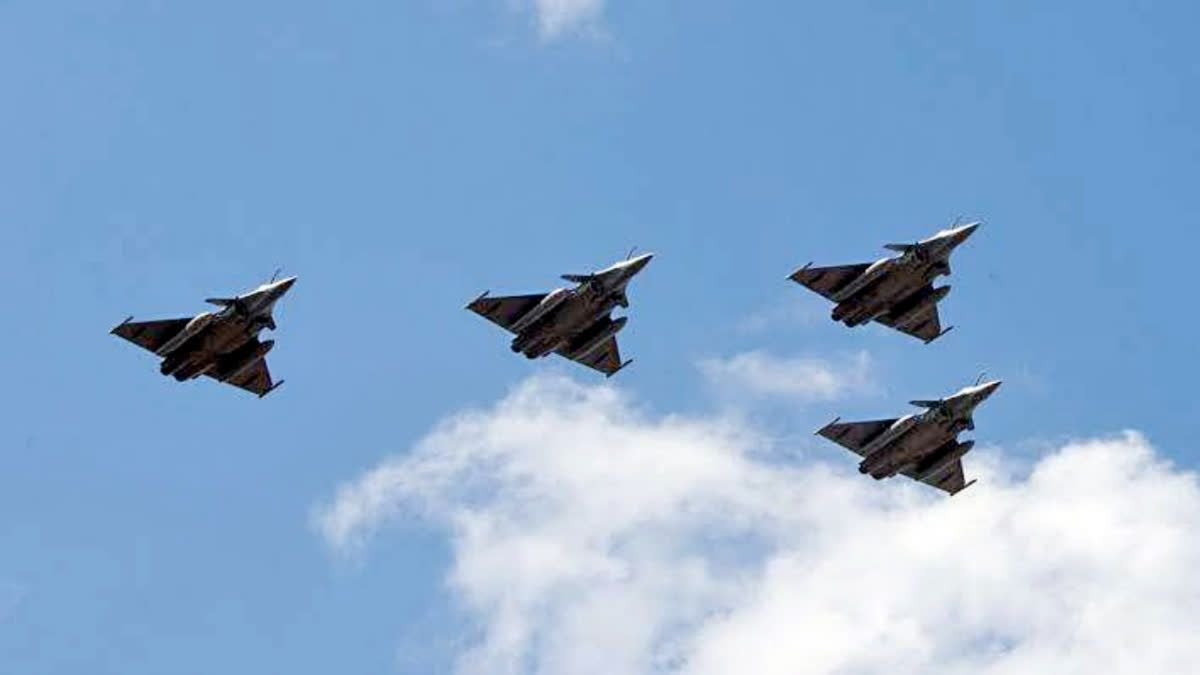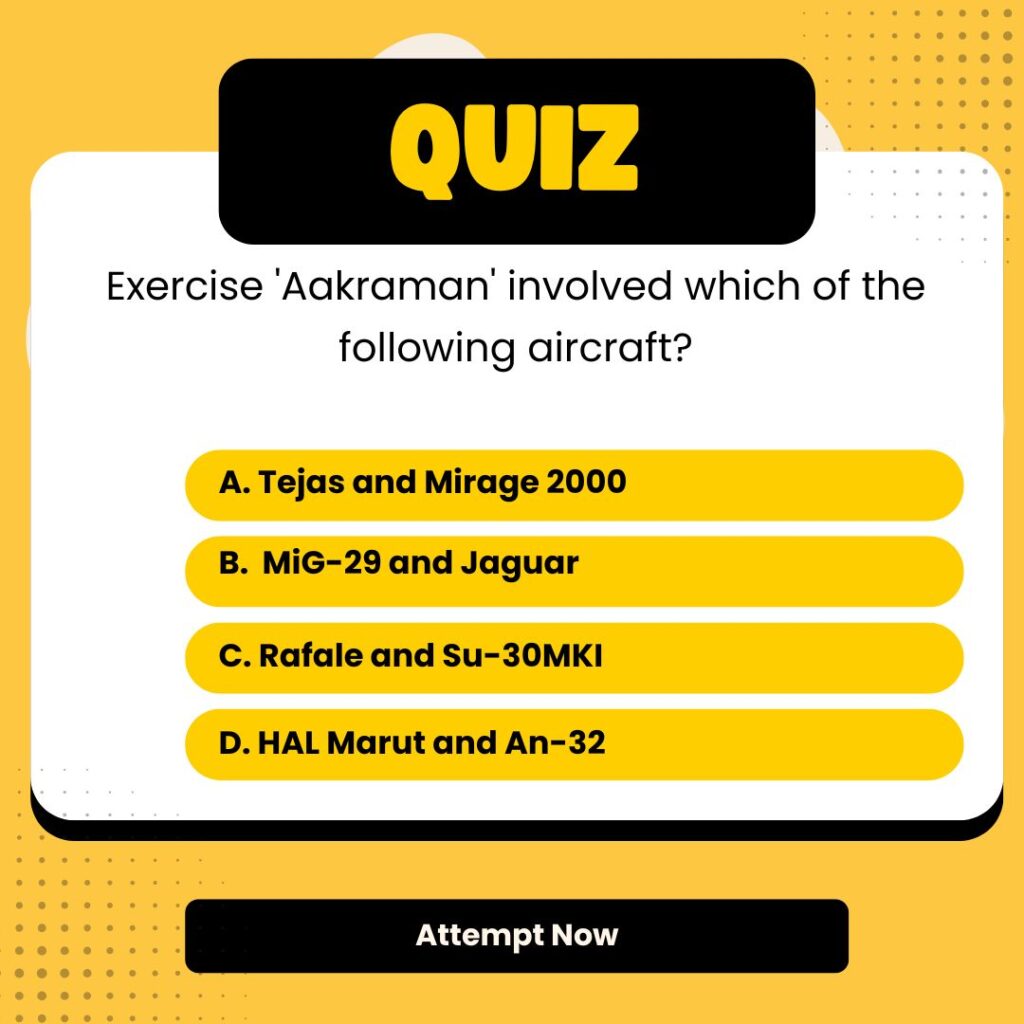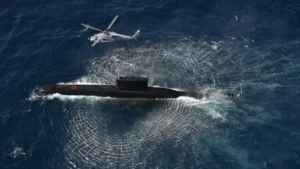Indian Air Force (IAF) conducted major military drills, named Exercise ‘Aakraman,’ simulating attacks on both mountain and ground targets. The exercise, which involved India’s most advanced fighter jets, including the Rafale and Su-30MKI aircraft, aimed to test and enhance the IAF’s capabilities in complex combat scenarios. With rising tensions between India and Pakistan, particularly after the Pahalgam terror attack, this exercise demonstrates the IAF’s readiness to defend India’s airspace and respond to any potential threats. The drills also emphasize the strategic advantage gained by the Indian Air Force through the induction of cutting-edge technologies like the Rafale jets and the S-400 air defense system.
Key Details of Exercise ‘Aakraman’
Scope and Purpose of the Exercise
- The exercise simulated attacks on both mountainous and ground-based targets, testing the IAF’s ability to carry out operations in challenging terrains.
- The primary goal was to conduct complex missions involving ground attack operations and electronic warfare, a crucial aspect of modern aerial combat.
Involved Aircraft
- The drill prominently featured the Dassault Rafale jets, which are an integral part of India’s fighter jet fleet. The IAF operates two squadrons of Rafales, one based at Ambala airbase and the other in West Bengal.
- Alongside the Rafales, Su-30MKI aircraft, known for their versatility and firepower, also participated in the exercises.
Operational Aspects
- The IAF’s fighter jets engaged in electronic warfare drills, testing their ability to disrupt enemy communications and radar systems during simulated combat.
- The Rafales were also involved in ground attack missions, targeting simulated positions in both plains and mountainous terrains.
- The exercise incorporated a variety of scenarios, including live fire drills and other offensive maneuvers.
Advanced Technology Integration
- The IAF’s new Meteor air-to-air missiles and Rampage missiles were highlighted in the drills. These missiles offer superior range, speed, and precision, giving the IAF a significant advantage in modern combat scenarios.
- The S-400 air defense system, another strategic asset, was also part of the IAF’s arsenal, enhancing its ability to counter airborne threats and enemy surveillance.
Training and Participation
- The drills were supervised by highly experienced instructors, including elite “Top Gun” pilots, who specialize in high-level combat operations.
- The exercise was closely monitored by the Air Headquarters, ensuring that the operations met the highest standards of effectiveness and readiness.
Geopolitical Context
- This exercise was conducted amid heightened security concerns, particularly due to ongoing tensions with Pakistan following the Pahalgam terror attack.
- Pakistan has also conducted military drills, including a missile test off the Karachi coast, which is seen as a show of strength in response to India’s actions.
- The Indian defense agencies are closely observing developments on the border and regional security dynamics, especially in light of the ongoing defense exercises and the volatile political climate.
| Summary/Static | Details |
| Why in the news? | Exercise ‘Aakraman’ Indian Air Force Drills with Rafales and Su-30s |
| Involved Aircraft | Dassault Rafale, Su-30MKI |
| Key Mission | Simulating attacks on mountain and ground targets, conducting ground attack and electronic warfare drills. |
| Advanced Weaponry | Meteor air-to-air missiles, Rampage missiles, S-400 air defense system |
| Geopolitical Context | Conducted amid heightened tensions with Pakistan following the Pahalgam terror attack, Pakistan’s missile test off Karachi coast. |
| Supervision Elite | “Top Gun” pilots, highly qualified instructors under the oversight of Air Headquarters |
| Training Focus | Complex combat scenarios, ground attack, electronic warfare, live fire drills, and missile operations |
| Strategic Advantage | Rafales’ cutting-edge technology, Su-30MKI versatility, and advanced missile capabilities enhance India’s defense and strike potential. |
| Impact | Enhances IAF’s readiness, strengthens defense capabilities, and demonstrates India’s military strength and deterrence power. |




 Army Achieves Major Logistics Milestone ...
Army Achieves Major Logistics Milestone ...
 India and Brazil Sign Tripartite MoU on ...
India and Brazil Sign Tripartite MoU on ...
 Indian Navy to Commission INAS 335 (Ospr...
Indian Navy to Commission INAS 335 (Ospr...







